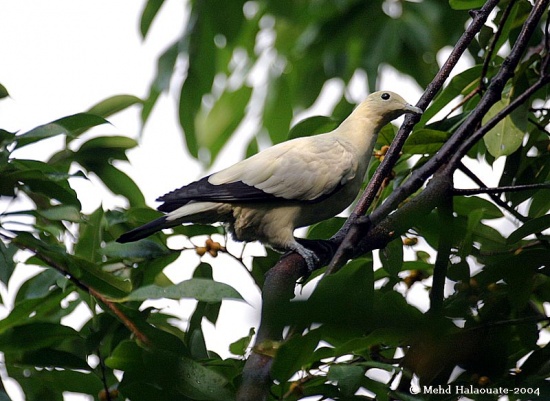Pied Imperial Pigeon may refer to one of the following three species formerly considered one species in the past:
- Pied Imperial Pigeon - Ducula bicolor (South-east Asia, the Philippines, and most of Indonesia) - This page.
- Torresian Imperial Pigeon - Ducula spilorrhoa (Australia and New Guinea)
- Yellowish Imperial Pigeon - Ducula subflavescens (Bismarck Archipelago)
- Ducula bicolor
Identification
37-44 centimetres (14-17.6 inches) length, with a 45 cm (18 in) wingspan. White or pale cream, black flight and tail feathers. Bill is mostly black in subspecies bicolor but yellow in melanura.
Distribution
South-east Asia, the Philippines, and most of Indonesia excluding at least the island of New Guinea.
Taxonomy
Two subspecies are currently recognized, bicolor and melanura. Torresian Imperial-Pigeon and Yellowish Imperial Pigeon have been split from the current species.
Habitat
Rainforests, eucalyptus woodland, coastal scrubs, creeks, rivers, mangroves and islands.
Behaviour
A nest made of sticks is placed in a tree; 1 white egg is laid and is incubated for 23-25 days. 21 days later the young fledges.
Diet is exclusively fruit.
Vocalizations
Calls made by the birds are a deep mrrrooooo, roo-ca-hoo and up-ooooo.
References
- Clements, James F. 2007. The Clements Checklist of Birds of the World. 6th ed., with updates to October 2007. Ithaca: Cornell University Press. ISBN 9780801445019
Recommended Citation
- BirdForum Opus contributors. (2024) Pied Imperial Pigeon. In: BirdForum, the forum for wild birds and birding. Retrieved 9 November 2024 from https://www.birdforum.net/opus/Pied_Imperial_Pigeon
External Links
GSearch checked for 2020 platform.1




